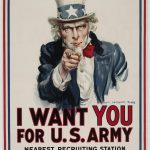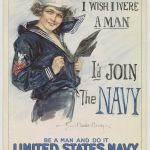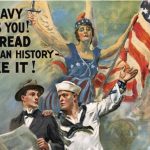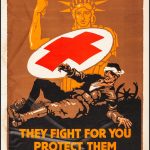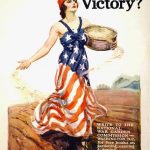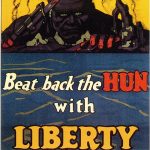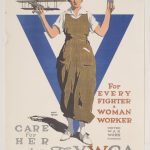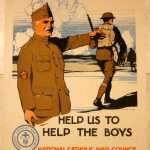Jun 9
Mobilizing for War
In our last class we glimpsed the role of patriotic music in mobilizing public sentiment. Today we turn to the visual rhetoric of WWI poster campaigns. To prime the pump for your HW, read this article posted by New York Historical Society about the depiction of women in WWI-era posters, many of them by an artist named Howard Chandler Christy (brief bio—if you're interested).
Then choose one of the following images and write a brief analysis noting:
- What kind(s) of people does the poster target, and what does it ask of them? (You may find it helpful to work backwards: think about what the poster is asking first, then about what kind of people make good targets for that demand.)
- What emotion(s) does the poster evoke in its targets? Alternatively, what promises or threats does it make, explicitly or implicitly? In discussing these questions, focus on at ONE or TWO key visual details.
- James Flagg Montgomery, July 6, 1916
- Howard Chandler Christy, 1917
- James Flagg Montgomery, 1917
- W.G. Sesser, c.1917
- J. Carl Mueller, 1917
- James Flagg Montgomery, c. 1918
- Frederick Strothmann, 1918
- Adolph Treidler, 1918
- Burton Rice, Nov 11, 1918
In Class: the Cultural Mission of Museums
WordCloud Site: link.

